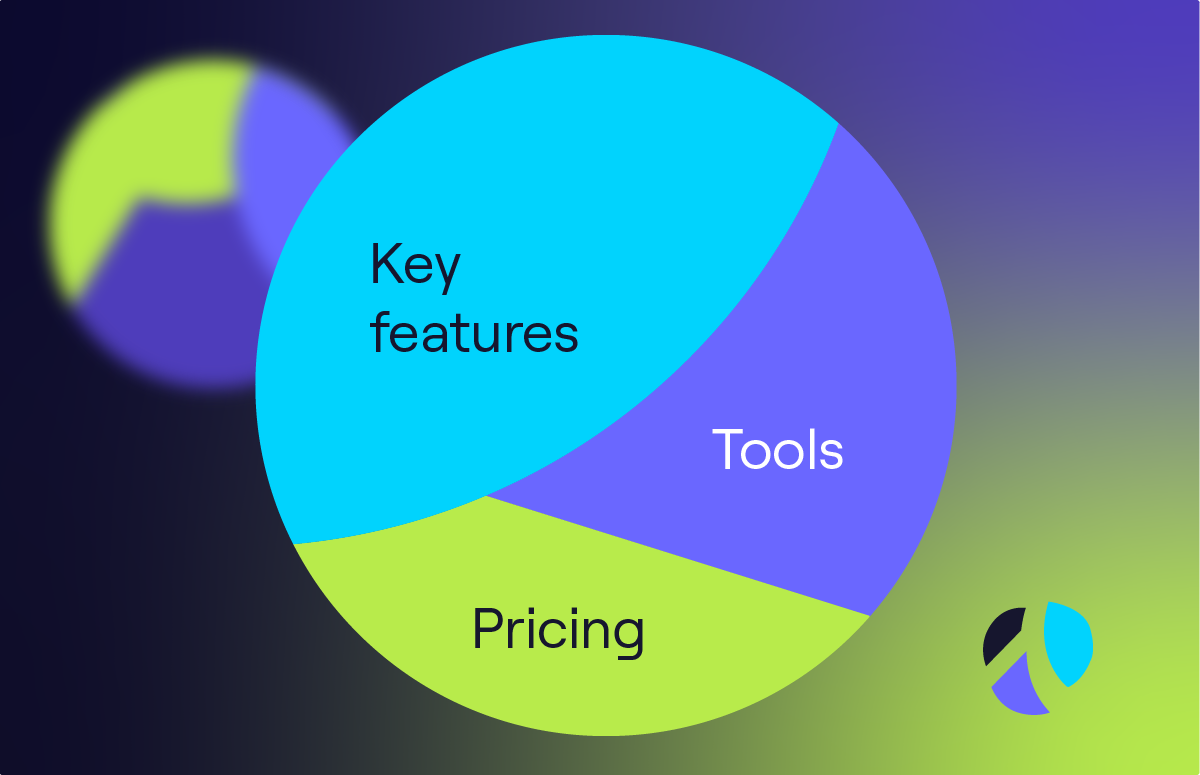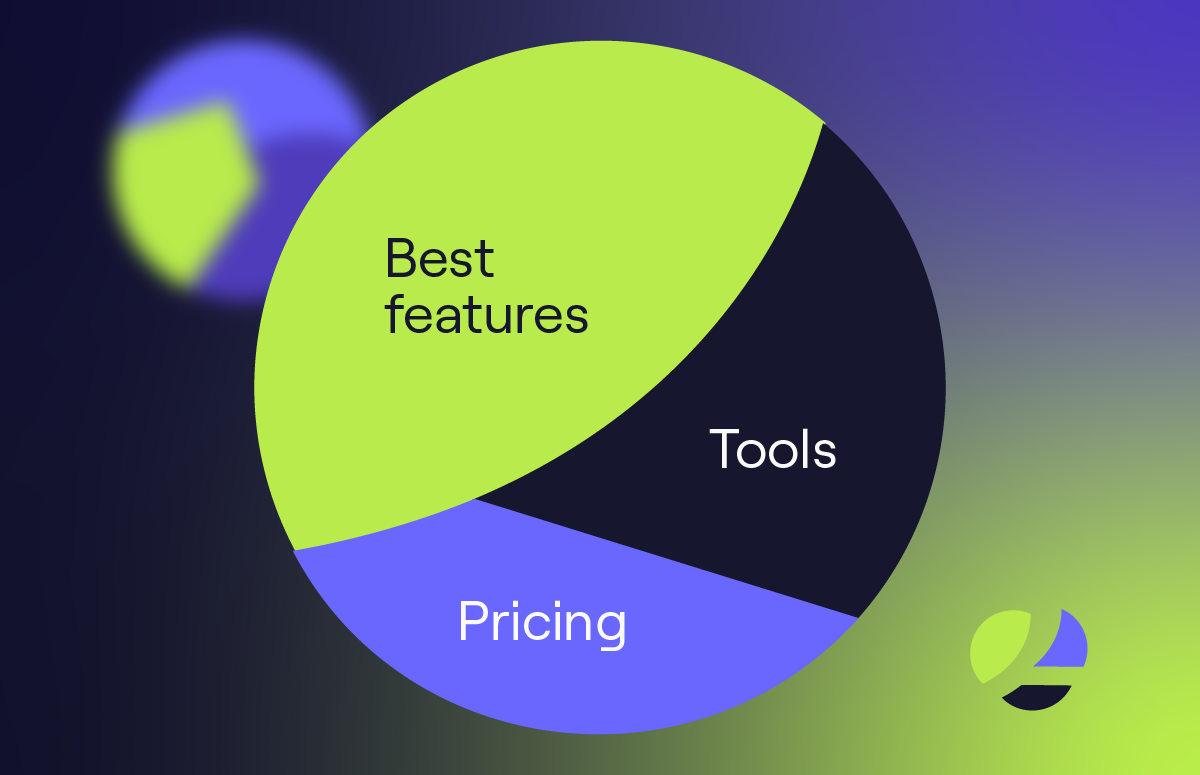20 Essential Sales Metrics Every Business Must Track
In a competitive economy, understanding the ebb and flow of your sales team isn’t a bonus - it’s a necessity.
Sales metrics highlight growth areas, unveil challenges, and guide strategic decisions. They’re not just statistics; they’re the heartbeat of sales success.
But which metrics deserve your attention?
In this guide, we’ll explain what sales metrics are, why you need them and what (in our opinion!) are the must-track metrics every business must track.
Scroll 👇 to dive in!
What are sales metrics?
Sales metrics are quantitative measurements used to assess, monitor, and improve a sales team’s performance and effectiveness.
They’re the vital signs of your business’s health. From the first engagement to managing customer relationships, sales metrics highlight strengths and areas for improvement in your sales process.
Why should you track sales metrics?
Metrics are crucial for several reasons:
- Performance evaluation - they identify high-performing sales representatives and teams. They also help you spot areas that need improvement.
- Goal setting and progress tracking - by studying relevant metrics and historical data, you can set realistic and achievable sales goals.
- Strategic planning - metrics help you optimise your sales strategy by identifying what works and what doesn’t.
- Customer insights - key sales metrics help you better understand customer behaviour, preferences, and satisfaction levels. With this understanding, you can improve relationships and drive long-term growth.
- Financial health monitoring - metrics help you track revenue growth and assess your company’s financial performance. They’re your guide to managing costs effectively.
- Data-driven decision-making - they help you make informed decisions, identify potential sales opportunities and adapt to changes.
- Motivation and accountability - metrics enable leaders to recognise achievements; they mean you can hold individual sales reps accountable and incentivise a team’s activity.
That’s the what and the why out of the way!
Now, let’s look at the 20 critical sales metrics, as chosen by Cognism’s sales managers. 👇
Outreach activity metrics
1. Calls made
Definition: The number of cold calls made.
Why track this metric: Monitoring call volume helps assess the sales team’s activity.
How to calculate it: Tally the total number of calls made by SDRs over a given time frame.
2. Emails sent
Definition: The number of sales emails dispatched.
Why track this metric: Monitoring email volume helps understand the sales team’s reach and persistence.
How to calculate it: Count the number of emails SDRs send during a specific time period.
3. Meetings booked
Definition: The total number of sales meetings scheduled.
Why track this metric: It gauges the effectiveness of outreach efforts in securing face-to-face meetings.
How to calculate it: Tally the number of meetings arranged by SDRs within a given period of time.
4. Follow-ups conducted
Definition: The number of follow-up activities carried out after the initial outreach.
Why track this metric: It helps evaluate whether your team is adequately nurturing leads.
How to calculate it: Count the follow-up activities SDRs undertake during a set time period.
Sales conversion metrics
5. Lead conversion rate
Definition: The percentage of leads that convert into sales opportunities.
Why track this metric: It indicates the effectiveness of your lead generation efforts.
How to calculate it: (Number of leads converted to opportunities / total leads) x 100.
6. Opportunity win rate
Definition: The ratio of opportunities that convert into closed sales.
Why track this metric: It measures your team’s effectiveness at closing deals.
How to calculate it: (Number of won opportunities / total opportunities) x 100.
7. Average sales cycle length
Definition: The average time it takes to convert a current lead into a customer.
Why track this metric: It helps to optimise the sales process for efficiency.
How to calculate it: Total days of all sales cycles / number of closed deals.
Revenue metrics
8. Monthly recurring revenue (MRR)
Definition: The predictable revenue that a company can expect to receive every month.
Why track this metric: It’s essential for understanding the health of a company’s revenue stream.
How to calculate it: Sum of all monthly subscription amounts.
9. Customer lifetime value (CLV)
Definition: The predicted revenue from a customer over the entire business relationship.
Why track this metric: It provides insight into your current customers’ long-term value.
How to calculate it: Average purchase value x average purchase frequency x average customer lifespan.
10. Average revenue per account (ARPA)
Definition: The average revenue generated from each account in a specific period.
Why track this metric: It helps businesses gauge revenue health across different client segments.
How to calculate it: Total revenue in a time frame / total number of accounts in the same time frame.
Customer health metrics
11. Customer satisfaction score (CSAT)
Definition: A measure of a customer’s satisfaction with a product or service.
Why track this metric: The CSAT reveals how well you’re meeting customer needs. High scores mean you’re on track; low scores suggest room for improvement.
How to calculate it: (Number of satisfied responses / total number of responses) x 100.
12. Net promoter score (NPS)
Definition: A measure of a customer’s willingness to recommend a company’s products or services to others.
Why track this metric: It evaluates overall customer satisfaction and brand loyalty.
How to calculate it: % of promoters (score 9-10) - % of detractors (score 0-6).
13. Customer churn rate
Definition: The percentage of customers who stop doing business with a company over a specified period.
Why track this metric: High churn rates can indicate problems with the product/service or customer service.
How to calculate it: (Number of customers at the beginning of a period - number of customers at the end of the period) / number of customers at the beginning of the period x 100.
Team performance metrics
14. Sales target achievement rate
Definition: The rate at which sales teams meet or exceed their targets.
Why track this metric: It indicates your entire team’s performance level.
How to calculate it: (Actual sales / sales target) x 100.
15. Sales response time
Definition: The average time it takes for a sales representative to respond to a potential customer.
Why track this metric: Timely responses can significantly increase conversion rates.
How to calculate it: Total response time for all queries / number of queries.
16. Sales productivity
Definition: The revenue a salesperson generates compared to their cost of selling.
Why track this metric: It lets you evaluate a sales professional’s efficiency and effectiveness.
How to calculate it: Total revenue generated by a sales rep / total cost of that rep.
Forecasting metrics
17. Sales forecast accuracy
Definition: How closely the forecasted sales numbers match the actual sales achieved.
Why track this metric: Accurate sales forecasts refine the forecasting process and ensure better planning.
How to calculate it: (Actual sales - forecasted sales) / forecasted sales x 100.
18. Quota attainment
Definition: The percentage of sales representatives meeting or exceeding their sales quotas.
Why track this metric: It gives a snapshot of team performance in relation to business goals.
How to calculate it: (Number of reps meeting or exceeding quota / total number of reps) x 100.
19. Pipeline coverage
Definition: The number of opportunities in a sales pipeline compared to the sales quota.
Why track this metric: It ensures there are enough deals in the pipeline to meet sales goals.
How to calculate it: Total value of opportunities in the pipeline / sales quota.
20. Lead velocity rate (LVR)
Definition: The growth rate of qualified leads from month to month.
Why track this metric? It shows a business’s growth momentum and the quality of its lead generation efforts.
How to calculate it: (Number of qualified leads this month - number of qualified leads last month) / number of qualified leads last month x 100.
Sales metrics FAQs
What are the 3 key metrics?
While every company prioritises different metrics based on its specific goals, certain indicators are universally important.
Which metrics are crucial for evaluating sales growth? In our opinion, the most important metrics are:
- Total Sales Revenue: measures the total income generated from sales; it’s crucial for assessing overall financial performance.
- Sales Conversion Rate: indicates the percentage of leads that turn into closed-won deals; it assesses the effectiveness of a sales organisation.
- Customer Acquisition Cost (CAC): calculates the expense of acquiring new customers; it helps businesses understand the cost-effectiveness of their sales and marketing teams.
Other important metrics include Average Customer Lifetime Value, Customer Retention Rate, Sales Cycle Length, Average Win Rate and Average Deal Size.
What is the difference between sales metrics and sales KPIs?
The terms sales metrics and KPIs (Key Performance Indicators) are often used interchangeably in business, but they refer to different concepts. Understanding the distinction between them is essential for effectively measuring and managing sales performance.
Here are the definitions:
Sales metrics
- Sales metrics are quantitative measures used to evaluate aspects of a sales process or performance.
- They encompass a wide range of data points related to sales activities, such as the number of leads generated, conversion rates, average deal size, sales cycle length, and total revenue per customer.
- They provide insights into different components of sales and help businesses track performance over time.
Key Performance Indicators (KPIs)
- Key Performance Indicators (KPIs) are specific metrics that are strategically aligned with an organisation’s goals and objectives.
- They focus on the most critical aspects of performance that directly impact business success.
- KPIs serve as benchmarks for evaluating progress toward achieving goals, making them essential tools for guiding decision-making and strategic planning.
How can sales metrics be used to improve performance?
Metrics are valuable tools for enhancing team and individual performance.
Here are examples:
- Setting clear goals: By aligning metrics with business goals, companies can set more precise targets and measure progress effectively.
- Identifying weaknesses: Metrics like win rate and sales cycle length can help pinpoint bottlenecks or inefficiencies affecting your business development team.
- Optimising strategies: Analysing metrics regularly can help you improve the customer experience and improve your sales efforts.
Valuable insights from sales leaders
We asked a group of business owners and leaders for their must-track sales metric.
Keep reading for some actionable insights 👇
Jacob Kalvo, Co-Founder and CEO at Live Proxies:
“One of the must-track metrics that I focus on is Customer Acquisition Cost.”
“From my perspective, this metric is important because it explains how much we are spending for each new customer acquired. It gives us an idea of how effective our marketing and sales strategies are and if we’re putting our resources in the right places.”
“A low CAC is an indicator that our outreach efforts really resonate with our potential clients. It empowers us to make data-based decisions with respect to pacing and budget adjustments.”
Logan Mallory, VP of Marketing at Motivosity:
“In my opinion, the ratio of customer lifetime value to customer acquisition cost is a highly significant indicator in the sales funnel. It provides a more comprehensive perspective compared to only tracking customer acquisition cost (CAC).”
“By comparing the acquisition cost to the customer’s lifetime value, you can determine how much it is worth.”
“The minimum achievable ratio is 1:1, indicating that the income obtained from a client is equivalent to the cost incurred in acquiring them.”
“Any ratio below 1:1 is bad for your organisation, and the expense of acquiring customers is excessively high. At such a point, a modification in your sales plan becomes necessary.”
Mark Pierce, CEO and Founding Partner at Wyoming Trust:
“I’ve always focused heavily on tracking sales productivity metrics, such as time spent on cold calling, time spent doing manual data entry, time spent using sales tools and systems, and of course, raw sales made percentages.”
“These metrics are usually easy to track, analyse, and improve on, making them ideal starting points for B2B companies.”
Cache Merrill, CTO and CEO at Zibtek:
“We track the sales cycle length closely because it directly impacts our revenue and growth. A shorter cycle means quicker conversions and faster revenue realisation.”
“By focusing on this metric, we can identify bottlenecks in our process and streamline operations. Monitoring cycle length also helps in sales forecasting and planning.”
Thomas Medlin, Co-Founder at JumpMD:
“The top common sales metric I focus on is the conversion rate of referrals to completed appointments.”
“This metric is crucial because it directly reflects the effectiveness of our referral system in facilitating patient care. Focusing on this metric provides a clear indicator of how well our solution is working in real-world scenarios.”
“By improving this rate, we ensure that more patients receive timely care, which enhances overall patient outcomes and satisfaction. More importantly, a high conversion rate demonstrates our value to medical practices, helping us build trust and secure more business. Ultimately, this focus drives both operational success and customer loyalty.”
Elisa Montanari, Head of Organic Growth at Wrike:
“Lead source analysis is vital for us because it helps us understand which marketing channels are most effective in drawing users in and converting them to closed sales.”
“But since it’s more complicated than Customer A coming and purchasing directly from Channel B, you should create two fields to better understand the data. Place the Initial Lead Source and Most Recent Lead Source side-by-side so you can see where this person came from and where we last saw them together on the same page.”
“With the right data, we can optimise our marketing strategies, lean into efforts that work, iterate strategies that don’t, and invest budgets accordingly.”



